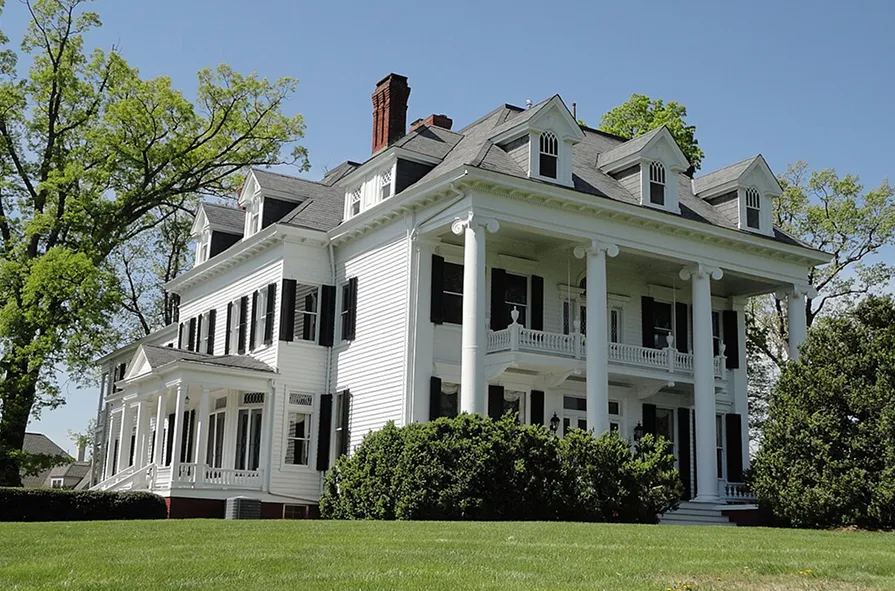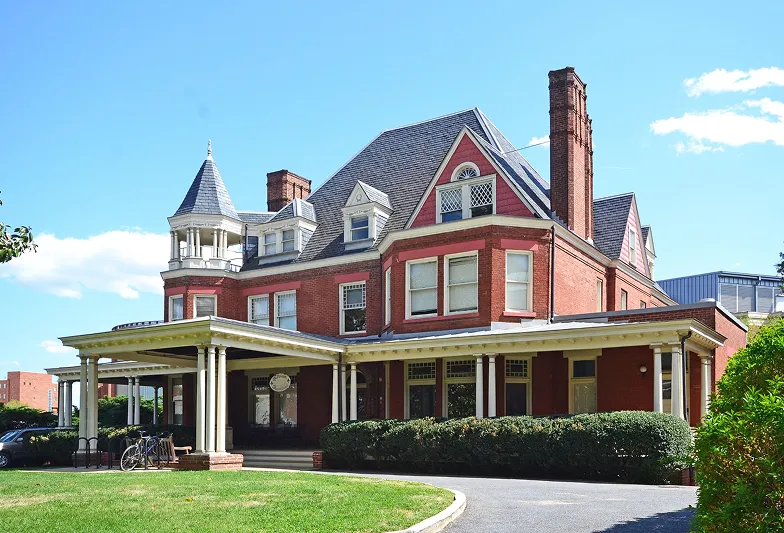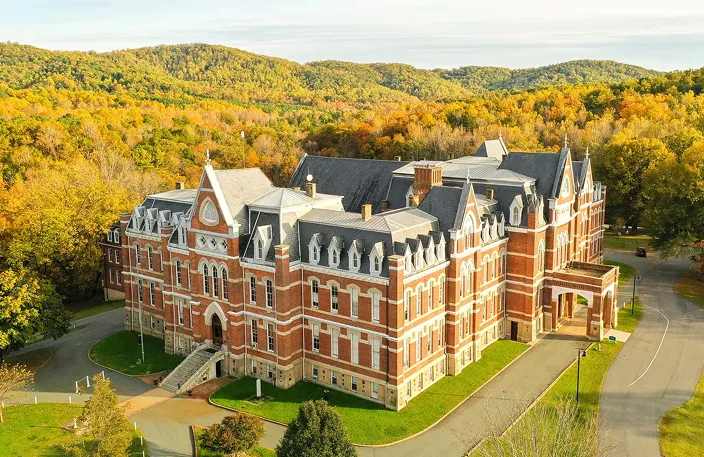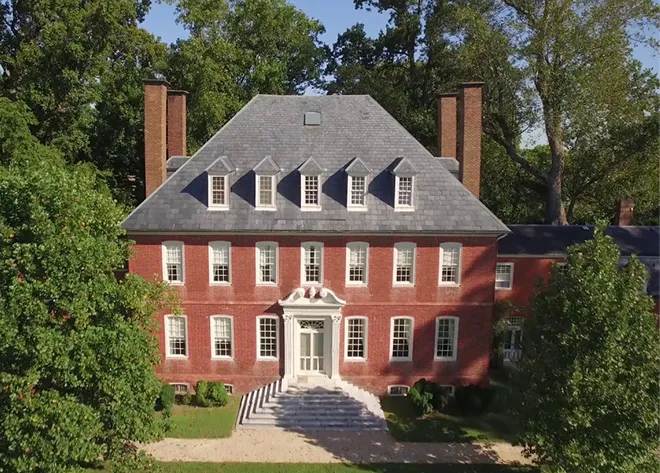At Commonwealth Contractors, our approach to building mirrors my personal philosophy on life, blending practicality with a touch of ingenuity. With a deep respect for classical building principles and a keen eye for modern improvements, you can rest assured that when you collaborate with Commonwealth Contractors, your project will be managed with quality and integrity.
.svg)


On a recent evening in Charlottesville, the Albemarle Historical Society, in partnership with Preservation Piedmont and other local organizations, hosted a remarkable lecture exploring the deep and layered history of Brown’s Cove. Sponsored by Commonwealth Contractors, this event brought together historians, preservationists, and community members to illuminate the stories, people, and places that have shaped this unique region of western Albemarle County.
The full video of the event is available above, but for those who want a thorough summary of the key moments, themes, and discoveries, this article provides a detailed guide. Whether you are a history enthusiast, a homeowner, or someone considering a new build or luxury renovation in the Charlottesville area, these highlights offer a window into the stories that continue to shape our community and landscape.
In the heart of Charlottesville, VA, Commonwealth Contractors are established experts in building and renovating homes that honor the region’s history. If you have any questions after reading this guide, please reach out.
Preservation in Action: The Power of Local Partnerships
Uniting for a Shared Mission
The evening began with remarks from Jenny Keller, President of Preservation Piedmont, who set the tone by emphasizing the importance of collaboration in historic preservation. She celebrated the coming together of four key groups—the City, Reclaim, the Historical Society, and Preservation Piedmont—each bringing unique expertise and resources to the table. This partnership, she noted, is not only about sharing information, but also about amplifying the impact of preservation efforts across Albemarle County and beyond.
Keller’s message was clear: by joining forces, these organizations can do far more to protect and promote the area’s cultural, historic, and natural resources than any could alone. This spirit of partnership is especially vital in today’s rapidly changing landscape, where historic sites face increasing pressure from development and neglect.
Spotlight on Current Preservation Projects
Keller also shared updates on two major projects:
- Martin Baker House: This historic home, once belonging to the University of Virginia’s second librarian, is currently threatened with demolition. Preservation Piedmont is actively advocating for its protection and encourages community involvement.
- Woolen Mills Historic Chapel: Another ongoing project involves the preservation and restoration of this important local landmark.
These efforts underscore the ongoing need for community engagement and informed decision-making in preservation work.
Meet the Historian: Dr. Jay Jacob Calhoun
.png)
Academic Rigor Meets Community Engagement
The main lecture was delivered by Dr. Jay Jacob Calhoun, a recent PhD graduate from the University of Virginia and a postdoctoral researcher at the Albemarle Charlottesville Historical Society. Dr. Calhoun’s research, supported by a team of dedicated interns, has focused on the history of Brown’s Cove over the past 14 months. His work is a model of how academic research can be made accessible and relevant to the broader public.
Dr. Calhoun’s project culminates in a digital platform that brings together interactive maps, story-driven presentations, and genealogical data, all designed to make the history of Brown’s Cove available to anyone with an interest in the region.
Brown’s Cove: Geography, Origins, and Early Settlement
Locating Brown’s Cove
Brown’s Cove is a geographically distinct region in western Albemarle County, centered around the Doyles River and nestled in the shadow of the Blue Ridge Mountains. Its relative isolation, especially from the west, has contributed to a unique community identity and a distinct historical trajectory. The area is known for its rugged beauty, with mountainous terrain and scenic vistas that have long attracted both residents and visitors.
The Brown Family: Founders and Namesakes
The region takes its name from Benjamin Brown Sr., who acquired the land in 1743, just before the founding of Albemarle County. Brown, along with his wife Sarah Thompson Brown and their children, established a homestead that would become the nucleus of a sprawling family estate. Over time, the Brown family’s holdings grew to encompass nearly 10% of Albemarle County—a testament to their influence and the scale of their operations.
The family’s legacy is not only one of land ownership, but also of community building, agricultural innovation, and, as the project makes clear, the complex and often painful history of enslavement.
Three Pillars of Brown’s Cove: Scope, Stability, and Dynamism
Scope: A Vast and Enduring Footprint
One of the most remarkable aspects of Brown’s Cove is the sheer scale of the Brown family’s landholdings. At their height, these properties represented a significant portion of the county, and the family’s influence extended well beyond their immediate borders. This scope is reflected not only in the size of the land, but also in the longevity of the family’s presence—spanning from the mid-18th century well into the 20th century.
Stability: Generational Continuity and Community Resilience
Unlike many other plantations and estates in Virginia, which were often broken up and sold after the death of their founders, Brown’s Cove remained largely intact for generations. Dr. Calhoun explained that this stability was due in part to the Brown family’s practice of dividing land among multiple heirs, rather than concentrating it in the hands of a single successor. This approach fostered a network of interconnected, self-sustaining farms and plantations, which proved more adaptable during periods of economic upheaval.
The result was a community that was both resilient and cohesive, with deep roots and strong ties among its residents.
Dynamism: Adapting to Change Across Centuries
Despite its reputation for stability, Brown’s Cove was far from static. The community adapted to changing economic, political, and social conditions, including the transition from tobacco to diversified agriculture, the impact of the Civil War, and the eventual migration of both white and Black residents in the late 19th and early 20th centuries. This dynamism is a testament to the ingenuity and adaptability of the people who called Brown’s Cove home.
Digital Storytelling: Bringing Brown’s Cove to Life
.webp)
Interactive Maps: Exploring the Past in the Present
A major highlight of Dr. Calhoun’s project is the use of digital tools to make Brown’s Cove’s history accessible and engaging. The project features an interactive map built on ArcGIS Online, which allows users to explore historical properties, boundary markers, and significant sites throughout Brown’s Cove. Users can view property ownership changes decade by decade, from the 1740s through the 1950s, and access detailed information about each parcel.
This digital map is not only a valuable resource for historians and genealogists, but also for anyone interested in the evolution of land use and community development in Albemarle County.
Story Maps and Timelines: Narratives That Connect
In addition to the interactive map, the project includes a series of story maps—self-guided, interactive presentations that cover key themes such as enslavement, the role of women, agricultural practices, and the impact of war. These story maps are designed to be accessible to a wide audience, offering both depth and context for those who want to explore specific aspects of Brown’s Cove’s history.
A chronological timeline further contextualizes local events within broader regional and national history, helping users understand how Brown’s Cove was both shaped by and connected to the outside world.
Brown’s Cove Through the Ages: Historical Highlights
Pre-Colonial and Early Colonial History
The history of Brown’s Cove stretches back thousands of years, with evidence of Monacan and other Siouan-speaking peoples inhabiting the area long before European colonization. The arrival of British colonists in the early 18th century marked a turning point, as land grants from King George II set the stage for the establishment of large estates like Brown’s Cove.
The project traces the transition from indigenous land use to colonial settlement, highlighting the ways in which geography, natural resources, and political decisions shaped the development of the region.
Building the Community: Enslavement and Labor
The construction and operation of Brown’s Cove’s plantations relied heavily on enslaved labor. The project does not shy away from this reality, documenting the lives and contributions of the hundreds of enslaved people who lived and worked in the area. Two major enslaved cemeteries remain as somber reminders of this history, and genealogical data helps piece together the stories of these individuals.
The project’s digital resources include lists of names, property records, and other documents that offer a more complete and inclusive narrative of the community’s past.
Economic Adaptation and Survival
Unlike many Virginia plantations that focused exclusively on tobacco, the Browns diversified their agricultural activities, incorporating animal husbandry, woodworking, and subsistence farming. This flexibility helped the community weather economic downturns that devastated other estates, such as Monticello, after the Revolutionary War.
The Browns also engaged in renting out enslaved labor rather than selling people away, which contributed to the relative stability of the local Black community, though the horrors of slavery remained ever-present.
Political and Social Distinctions
The Brown family’s political affiliations set them apart from many of their peers. While most Virginia planters were Democrats, the Browns were largely Whigs, advocating for internal improvements and infrastructure projects such as the Browns Turnpike—a toll road that remains a significant feature of the area. This focus on local development and community investment helped shape the character of Brown’s Cove.
The Civil War and Emancipation
The Civil War brought profound changes to Brown’s Cove. Many members of the Brown family fought for the Confederacy, while the end of the war marked emancipation for the area’s enslaved population. The postwar period saw both hardship and new opportunities, as formerly enslaved people sought to reunite families and build new lives. The project documents the ways in which the community adapted to these changes, including the gradual breakup of the Brown family’s holdings and the influx of new residents.
Women’s Roles: Hidden Figures in Plain Sight
Women played a significant, though often underrecognized, role in the history of Brown’s Cove. Despite legal restrictions on property ownership, many women in the Brown family managed land and resources, and some were directly involved in the operation of plantations and the exploitation of enslaved labor. The project highlights the stories of these women, as well as the experiences of enslaved women who faced immense challenges in maintaining families and communities under slavery.
Craftsmanship and Industry: Furniture and Prosthetics
Brown’s Cove was also known for its tradition of craftsmanship. Members of the Brown family, along with enslaved artisans, produced fine furniture—some of which still survives in local collections. The area was also home to workshops that made prosthetic limbs for Civil War veterans, reflecting the community’s adaptability and resourcefulness.
Modern Transitions: 20th Century and Beyond
Land Loss and the Creation of Shenandoah National Park
The 20th century brought new challenges and changes to Brown’s Cove. The creation of Shenandoah National Park in the 1930s led to the displacement of some families, a topic identified as ripe for further oral history research. The gradual breakup of the Brown family’s holdings and the influx of new residents marked the end of an era, but the legacy of the community endures.
Today, Brown’s Cove remains a place of historical significance, with many of its historic structures, cemeteries, and landscapes still visible to those who know where to look.
Oral Histories and Community Memory
One of the most exciting aspects of the project is its potential to grow through the collection of oral histories. Several audience members at the lecture shared personal connections to Brown’s Cove, including descendants of the Brown family and those who own original furniture and artifacts. Dr. Calhoun emphasized the importance of capturing these stories to enrich the historical record and ensure that the voices of those who lived and worked in Brown’s Cove are not lost.
Audience Q&A: Insights and Unanswered Questions
Engaging with the Past
The lecture concluded with a lively question-and-answer session, during which audience members asked about topics ranging from the impact of the Shenandoah National Park to the significance of the Doyles River and the connections between Brown’s Cove and other plantations. Dr. Calhoun provided thoughtful responses, often pointing to the need for further research and community involvement.
Key questions included:
- How did the creation of Shenandoah National Park affect Brown’s Cove? Dr. Calhoun noted that this is an area for future research, particularly through oral histories.
- What was the role of the Doyles River in the community’s development? The river provided essential water resources and served as a boundary marker for property lines.
- Are there connections between Brown’s Cove and other plantations? While the community was relatively stable, there were likely familial and social ties to other plantations, especially among the enslaved population.
- What factors contributed to the long-term stability of Brown’s Cove? Dr. Calhoun identified geography, the division of land among heirs, and the resilience of both the Brown family and the enslaved community as key factors.
Why Brown’s Cove Matters for Today’s Homeowners and Builders
Preserving Heritage in Modern Projects
For those considering building a new home or undertaking a luxury renovation in Albemarle County, the story of Brown’s Cove offers valuable lessons. The region’s history of resilience, adaptation, and community-building is reflected in its architecture, landscapes, and traditions. Preserving and honoring this heritage is not only a matter of historical interest, but also a way to create homes and spaces that are rooted in the unique character of the region.
Whether you are restoring a historic property or designing a new home that draws inspiration from the past, understanding the stories and values of places like Brown’s Cove can inform your choices and deepen your connection to the land.
Explore Further: Digital Resources and Community Involvement
Accessing the Project Online
The digital project created by Dr. Calhoun and his team is available to the public through the Albemarle Charlottesville Historical Society’s website. It includes interactive maps, story maps, genealogical data, and a wealth of resources for further reading and research. Community members are encouraged to explore these tools, contribute their own stories, and participate in the ongoing work of preservation and discovery.
Get Involved
If you have personal connections to Brown’s Cove, own artifacts or documents, or are interested in contributing to oral history projects, the Historical Society welcomes your involvement. Sharing your knowledge and experiences can help ensure that the full story of Brown’s Cove is preserved for future generations.
.webp)
Partner with Commonwealth Contractors: Building on History, Creating the Future
At Commonwealth Contractors, we believe that every home tells a story. As experts in new home construction and luxury renovations in Charlottesville and Albemarle County, we are committed to honoring the region’s rich heritage while delivering exceptional quality and craftsmanship. Whether you are restoring a historic property or building your dream home in a place steeped in history, our team brings deep local knowledge, respect for tradition, and a passion for excellence to every project.
If you are inspired by the history of Brown’s Cove and want to ensure your next project reflects the best of Virginia’s past and present, contact Commonwealth Contractors today. Let’s build something extraordinary together.

.svg)
.webp)




.webp)
.webp)



.webp)











.webp)
.webp)

.webp)
.webp)
%2520(1).webp)
%2520(1).webp)
%2520(1).webp)

.webp)
.webp)
%2520(1).webp)
%2520(1).webp)

%2520(1).webp)
%2520(2).webp)

%2520(1).webp)
%2520(2).webp)
.webp)



.webp)
.webp)
%2520(2).webp)
.webp)
.webp)
%2520(1).webp)

.webp)
%2520(3)%2520(1).webp)
.webp)
%2520(1)%2520(1).webp)
.webp)
%2520(1).webp)
%2520(2)%2520(1).webp)